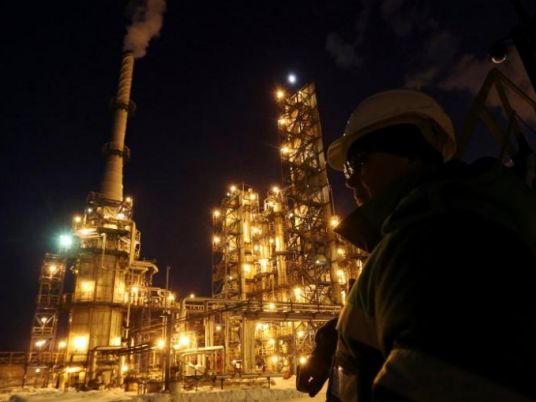
Oil prices and energy shares swept higher on Thursday after OPEC agreed to cut crude output to clear a recent glut, while the dollar and bond yields rose sharply on prospects that resulting inflationary pressures will lead to higher interest rates.
The Organization of the Petroleum Exporting Countries on Wednesday agreed to its first output cut since 2008, finally taking action after global oil prices fell by more than half in the last two years.
Non-OPEC Russia will also join the agreed output reductions for the first time in 15 years.
U.S. crude oil CLc1 added to overnight gains of 9 percent to reach US$50.00 a barrel for the first time since late October. Brent crude LCOc1, which soared US$4 overnight, touched a six-week peak of US$52.35 a barrel.
The jump in oil prices added to inflation expectations in the United States, which were already high on prospects that president-elect Donald Trump would adopt reflationary policies using a large fiscal stimulus.
As a result, US Treasuries resumed their rout, with prices sliding and yields spiking, to send the dollar rallying against its peers.
The yield on 30-year bonds US30YT=RR, which are most sensitive to inflation eroding their value, has climbed 9 basis points since late Tuesday, heading back towards a 14-month peak of 3.09 percent marked last week.
"The reflation trade continues to work in earnest, this time Trump has taken a back seat and OPEC and Russia have taken the initiative and lit the fuse under the oil price," wrote Chris Weston, chief market strategist at IG in Melbourne.
"The consensus was that we would get some sort of loose agreement from the collective that kept oil supported, but left the market asking many more questions. What we have seen however has been real meat on the bone."
If the bounce in oil prices gathers pace after the OPEC deal it was expected to have a broad implication on the global economy.
Brent is off the 12-year low of US$27 per barrel marked in January but still less than half of where they were in 2014.
Economists expect a further recovery in crude to bode well for oil-exporting economies, while potentially easing deflationary pressures in developed economies locked in a battle against falling prices.
OPEC's output cut is also seen as a boon for U.S. shale producers, rivals to the oil cartel. The S&P energy index .SPNY jumped nearly 5 percent on Wednesday.
In currencies, the dollar advanced to a 9-1/2-month high of 114.830 yen before pulling back to 114.060.
Steven Mnuchin, Trump's pick to lead the U.S. Treasury, gave no hint of any unease at the strong dollar in his first remarks since being named for the job, giving traders fresh impetus to buy the greenback.
"I think it is just a matter of time that the dollar will test 115 yen after Mnuchin was silent about the dollar's strength," said Masafumi Yamamoto, chief currency strategist at Mizuho Securities.
The euro was steady at US$1.0604 EUR= after shedding 0.6 percent the previous day.
The dollar index .DXY was a shade lower at 101.38 after rallying overnight from a low of 100.84.
In Asian equities, Australian stocks were up 0.9 percent and Japan's Nikkei .N225 hit an 11-month peak. Tokyo's mining sub-sector .IMING.T jumped more than 10 percent and was the biggest gainer on board.
MSCI's broadest index of Asia-Pacific shares outside Japan .MIAPJ0000PUS was up 0.6 percent. Shanghai .SSEC gained 0.5 percent.
Japan Petroleum Exploration Co (1662.T) rose 12 percent, posting its biggest intraday gain since March 2013. Hong Kong shares in China's oil giants Sinopec (0386.HK), PetroChina (0857.HK) and CNOOC (0883.HK) gained as much as 4.8 percent, 6.1 percent and 8 percent, respectively.
Spot gold XAU= touched a 10-month low of $1,163.45 on the dollar's oil-induced surge. Silver XAG= and platinum XPT= also slipped.
(Reporting by Shinichi Saoshiro; Additional reporting by Hideyuki Sano in Tokyo; Editing by Simon Cameron-Moore)




